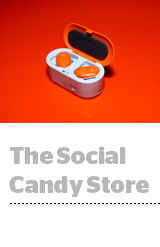 Although Facebook, Instagram, YouTube and Twitter are getting more expensive, they remain the go-to places for brand-building campaigns.
Although Facebook, Instagram, YouTube and Twitter are getting more expensive, they remain the go-to places for brand-building campaigns.
That’s the approach being taken by Skullcandy, the maker of headphones and audio devices, as it looks to grow from its action sports roots to a broader audience, according to CMO Jessica Klodnicki, who was hired in 2017 to oversee to the brand rebuild.
While social media promises exposure, which can be found in other reach channels like television, it also creates prospecting pools that tie to individual accounts, instead of fleeting IDs like cookies.
For instance, Skullcandy did a 25-part series last year where it livestreamed concerts and the YouTube and Facebook users who watched the shows “created a nice retargetable audience,” Klodnicki said.
When the company introduces new products or campaigns to increase foot traffic, those retargetable audiences can be served more personalized or “commercially driven” content, she said. “We loved how that worked so this year the stream of content is even greater.”
Inventory rates are rising on those social channels, Klodnicki said, but the data coming in helps crystalize their target audiences, improving the average order rate, average order value and the cost to convert. Those benefits compensate for the higher upfront cost to reach individual accounts.
Skullcandy can also afford to sharpen its focus on social media because its retail partners account for most sales and do the legwork in other digital channels.
If Skullcandy invested heavily in search, it would be competing with (and losing to) its retail carriers like Best Buy or Target, Klodnicki, said, driving up costs for all involved. Skullcandy’s own site also never offers the lowest prices for its products, which would put it in more direct competition with its retailers.
“We’re very mindful not to compete down-funnel with our retailers,” she said. “That’s part of why we’ve invested more in the social platforms, and can let our retail partners spend their dollars in search and elsewhere more effectively.”
This post was syndicated from Ad Exchanger.


More Stories
Warner Bros. Discovery CEO David Zaslav Receives $51.9 Million Pay Package for 2024
TikTok Fave Duolingo Boosts YouTube Shorts Viewership 430% in One Year
Streaming Ratings, Week of March 10: Disney+ Sails to the Top Courtesy of Moana 2